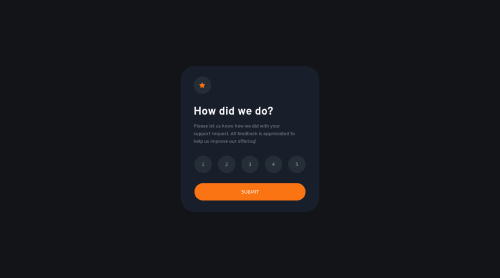Submitted almost 3 years agoA solution to the Interactive rating component challenge
Javascript was hard
@brendowe

Solution retrospective
My javascript needs to improve a bit, but what was really difficult was the logic. I felt like an idiot not being able to think of how to find a solution. If anyone has tips on how I can improve my thinking for programming I would appreciate it.
Code
Loading...
Please log in to post a comment
Log in with GitHubCommunity feedback
No feedback yet. Be the first to give feedback on O Grande Soldador's solution.
Join our Discord community
Join thousands of Frontend Mentor community members taking the challenges, sharing resources, helping each other, and chatting about all things front-end!
Join our Discord